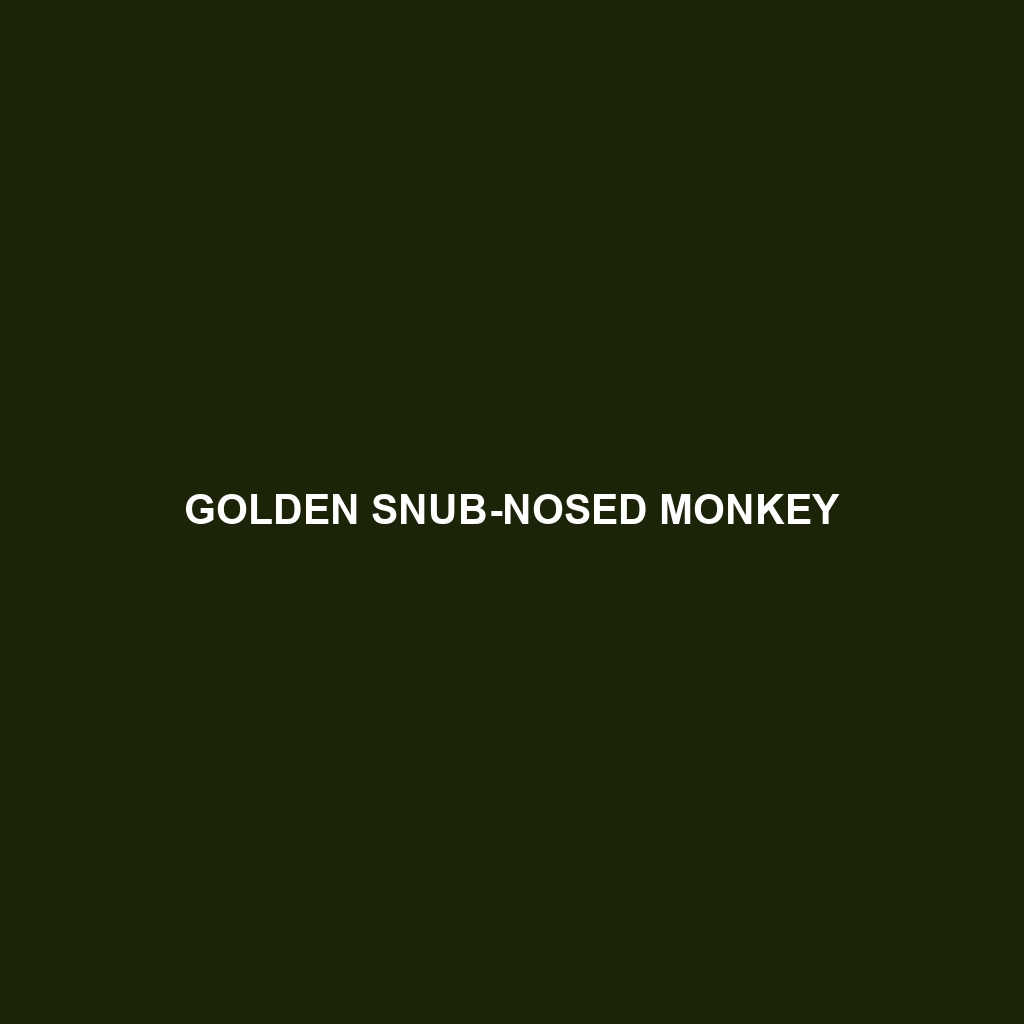Golden Snub-nosed Monkey (Rhinopithecus roxellana)
The Golden Snub-nosed Monkey, scientifically known as Rhinopithecus roxellana, is a highly distinctive and charismatic primate native to the mountainous forests of central and southwestern China. Known for their striking golden fur and unique facial features, these monkeys exhibit a fascinating array of behaviors and adaptations that make them a subject of interest for both researchers and wildlife enthusiasts.
Physical Characteristics
Size and Weight:
Males: Approximately 51-83 cm in body length, with a tail length of 56-72 cm; weigh around 15-39 kg.
Females: Smaller in size, averaging 47-65 cm in body length, with a tail length of 52-68 cm; weigh about 6-16 kg.
Coloration:
The fur of the Golden Snub-nosed Monkey is predominantly golden-orange, with variations of light to dark tones across individuals.
Their face is a distinctive pale blue, devoid of fur, and their noses are short and upturned, giving them their “snub-nosed” appearance.
The chest, belly, and inner limbs are typically a lighter, creamy color, while the outer limbs and back are darker.
Special Features:
Their large, expressive eyes are surrounded by a dark ring of fur, adding to their unique appearance.
The thick fur coat provides insulation against the frigid temperatures of their high-altitude habitats.
Behaviors
Social Interactions:
Golden Snub-nosed Monkeys are highly social and live in large groups, often called troops, which can range from a few dozen to several hundred individuals.
They exhibit complex social structures, including multiple levels of group organization such as one-male units (OMUs), all-male units (AMUs), and multi-male multi-female units (MMUs).
Social grooming is an essential activity that strengthens bonds and reduces tension within the group.
Feeding Habits:
Their diet is primarily herbivorous, consisting of a variety of plant materials such as leaves, fruits, seeds, bark, and lichens.
They also consume insects and other small invertebrates occasionally, providing additional protein.
Ecological Roles:
As seed dispersers, Golden Snub-nosed Monkeys play a crucial role in maintaining the health and diversity of their forest ecosystem.
Their feeding activities help with the cycling of nutrients and the promotion of plant growth.
Habitats and Adaptations
Natural Habitat:
These monkeys are primarily found in temperate, deciduous, and coniferous forests at elevations ranging from 1,500 to 3,400 meters above sea level.
They prefer regions with dense canopy cover, which offers protection and a rich source of food.
Adaptations:
Their thick fur is a key adaptation to the cold climates of their high-altitude habitats, providing necessary warmth during harsh winters.
Their strong limbs and prehensile tail enable them to navigate the complex forest canopy with agility and ease.
Conservation Status
The Golden Snub-nosed Monkey is classified as Endangered on the International Union for Conservation of Nature (IUCN) Red List.
Their population is threatened by habitat loss due to deforestation, as well as poaching and illegal wildlife trade.
Conservation efforts are underway, including habitat protection, anti-poaching measures, and breeding programs to help increase their numbers.
Fun Facts
The Golden Snub-nosed Monkey is one of the few primates adapted to live in regions with snowfall, showcasing their remarkable resilience to cold environments.
They communicate using a variety of vocalizations, including calls, grunts, and whistles, each serving different social functions within their groups.
These monkeys are featured in Chinese folklore and are often regarded as symbols of happiness and good fortune.
In conclusion, the Golden Snub-nosed Monkey is a fascinating and visually striking species with unique adaptations and behaviors that make it a vital component of its ecosystem. Their conservation is crucial to preserving the rich biodiversity of the mountainous forests they inhabit.
